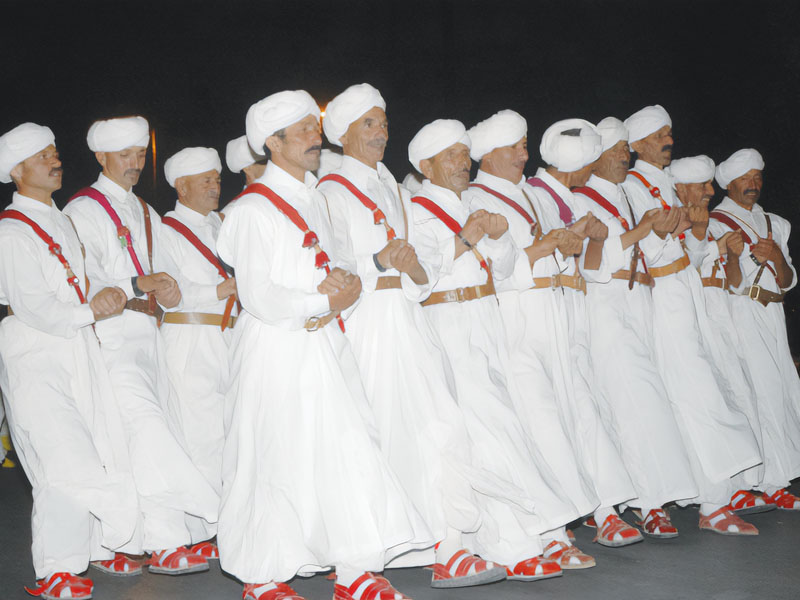Moroccan folk dance
Issue 24

Dance is a wordless language. There male-only dances, dances for females and mixed dances. Dancers sometimes dance by themselves, and sometimes in pairs or groups. At some dances, there is no limit to the number of participants.

People have danced for centuries; it is an important historical phenomenon and a rich subject for research and study. Dance is regarded as one of the oldest forms of expression and emotional release.
According to the Greeks, folk dance dates back to the beginning of the Universe. It was used to express happiness, to thank the gods and even as a form of worship. It evolved with society and took on different forms according to the occasion and the rhythms. Dance reflects the ways that people think, their religious practices and other areas of life.
Morocco is known for several dance forms that can be classified into four categories: ‘Al Allawi and Al Mankushi’,‘Ahaidus’,‘Ahwash’and ‘Al Kadra’.Characterized by their charm, ‘Ahwash’ and ‘Al Kadra’ have complex meanings and symbols.
‘Ahaidus’, ‘Ahwash’ and ‘Al Kadra’ combine songs and dancing; they are performed by both genders and they have modern themes, with the exception of the traditionally themed dagger dance of the Haha region.
This paper offers a definition of dance, followed by a discussion of dancing’s evolution, typology, function and symbolism. The paper then focuses on the types and practices of Moroccan folk dance, using ‘Ahwash’ as an example.
The two appendices include terms related to folk dance and various dance forms. The paper used the anthropological, morphological and sociological approaches to explain the aspects of Moroccan folk dance.
Al Jilali Al Ghurabi
Morocco


































































